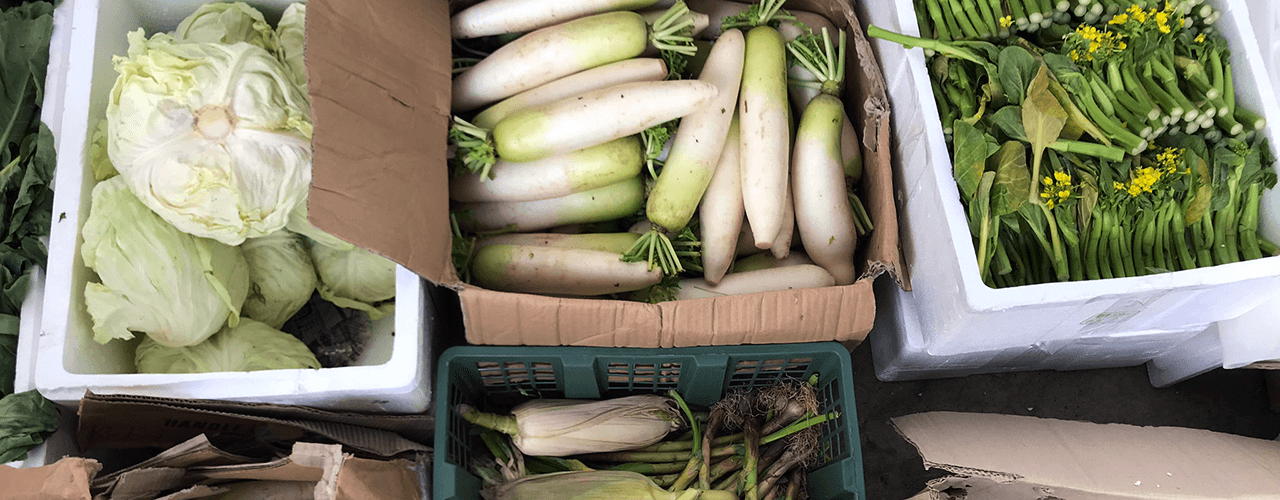Does This Look Like It’s Not Fit for Eating?
Twenty-four crates of bak choy (chinese cabbage), and we could have as many as we wanted. The rest of it would likely go unsold and be thrown away.
That’s when the penny dropped. Food wastage is a big problem.
I’ve seen trays of unfinished food dumped into trash bags after a buffet. I have guiltily tossed out half-finished bottles of salad dressing that I bought on a whim, only to forget them until they’ve gone bad.
But my understanding of food wastage hit a new level at Pasir Panjang Wholesale Centre that day. Vast quantities of produce, most of it perfectly edible, is going into the bins for a myriad of reasons, well before they ever reach my doorstep.
I was at Pasir Panjang with SG Food Rescue, a group of volunteers who rescue food deemed not good enough to sell, and deliver them to non-profit organisations which provide meals to the underprivileged.
The group is also supporting Feeding the 5,000, a mass lunch for the public on March 25 organised by Gone Adventurin’, featuring dishes prepared from unwanted food, aimed at shining a light on the food wastage problem.
Going from stall to stall asking for unwanted veggies and fruit, I initially thought the effort wouldn’t yield much - we got plenty of rejection along the way.
But gradually, the amount of produce considered too “ugly” or too “small” to sell began to pile up - culminating in the offer of 24 crates of bak choy. “I want the baskets back though,” the wholesaler added.
We had to say no - the group doesn’t take more food than it can distribute.
In less than two hours, we collected 400kg of fruits and vegetables - bak choy, gem lettuce, pea shoots, pineapples, melons, strawberries and more. Because the group was only intending to deliver to one receiving organisation that day, they held back from collecting their typical haul, which ranges from one to two tonnes.
The quality of the produce was surprisingly good. Sure, some of the long beans looked a little old, but none of it was close to being unfit to eat. SG Food Rescue co-founder Judee Tan showed me a delectable-looking red pepper, and told me the stall owner found it “too small” to sell.
“Ugly” but edible food is only one part of the equation. Some wholesalers also shared that they occasionally import more food than they can sell, because suppliers set business terms that make it uneconomical to import less.
In 2016, Singapore generated 791,000 tonnes of food waste. Many of the public campaigns against food wastage have focused on consumer behaviour and attitudes, such as reminding people not to buy more than they need.
But my visit to the wholesale centre opened my eyes to a bigger question: what if it’s the food supply system that’s broken? Why is it that we have more food than we need in our markets, while global hunger remains a problem?
We need to rethink our attitude towards “ugly” food and be more mindful about our buying habits. We could also starting thinking about how to get the bigger players in our supply chain to cut waste at the source.
This is why events like Feeding the 5,000 and groups like SGFR are important. Not because they single-handedly solve problems, but because they are starting points.
By feasting 5,000 people with dishes made from produce that was destined for the bins - for no good reason - Feeding the 5,000 reminds us that “ugly” produce can still yield tasty and nutritious meals.
By gathering volunteers to collect unwanted produce for a good cause, SGFR gives you a glimpse of the true extent of food wastage.
They open our eyes to bigger issues, and get us to question how the world works. That’s where we need to be, if we want to eventually tackle problems at the root.
Meanwhile, here’s the unwanted produce I picked out at the wholesale centre that day.
After inspecting the loot, Nithiya Laila of Brunch Bandits came up with a recipe for a potato salad with strawberry lime dressing.
Of the remaining produce, I stir-fried the di huang miao (pea shoots) with garlic for dinner, sliced up the Japanese cucumber for a salad, and plan to chop up the radish to make stock.
Unfit to eat? Not even close.







